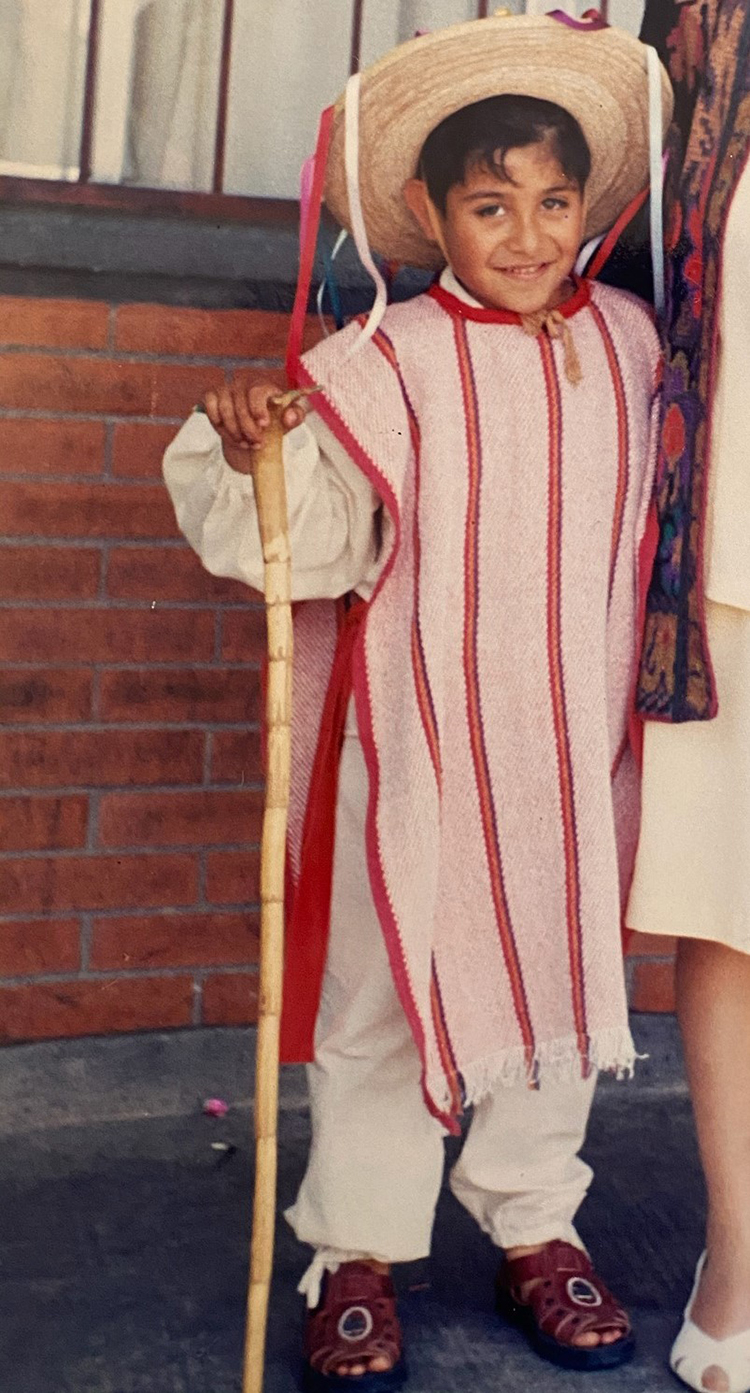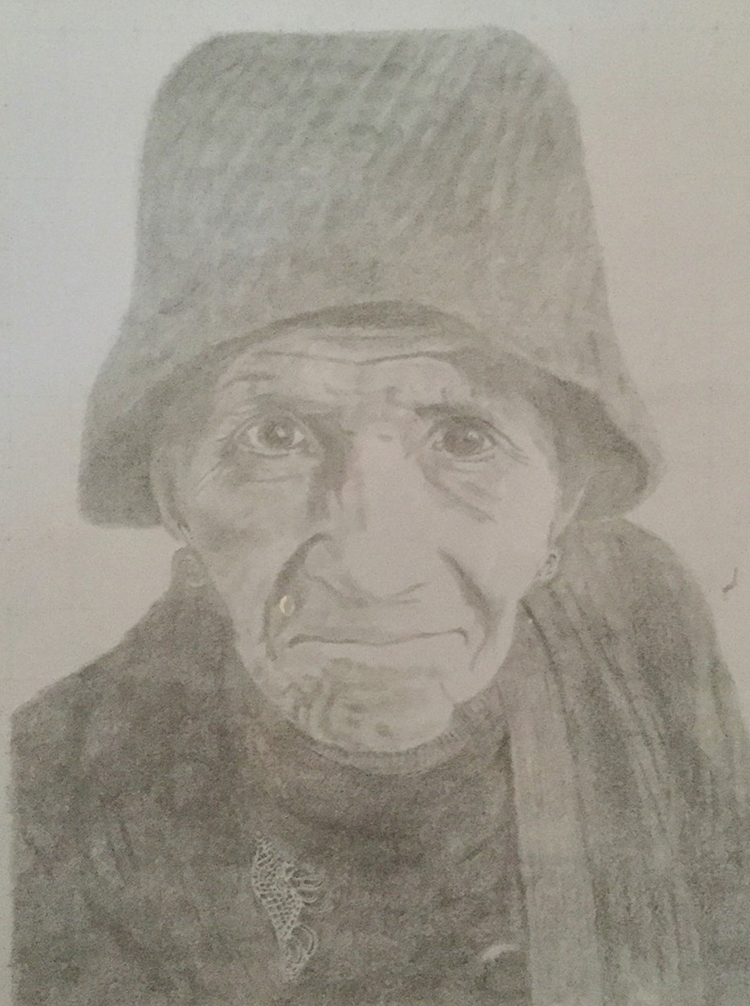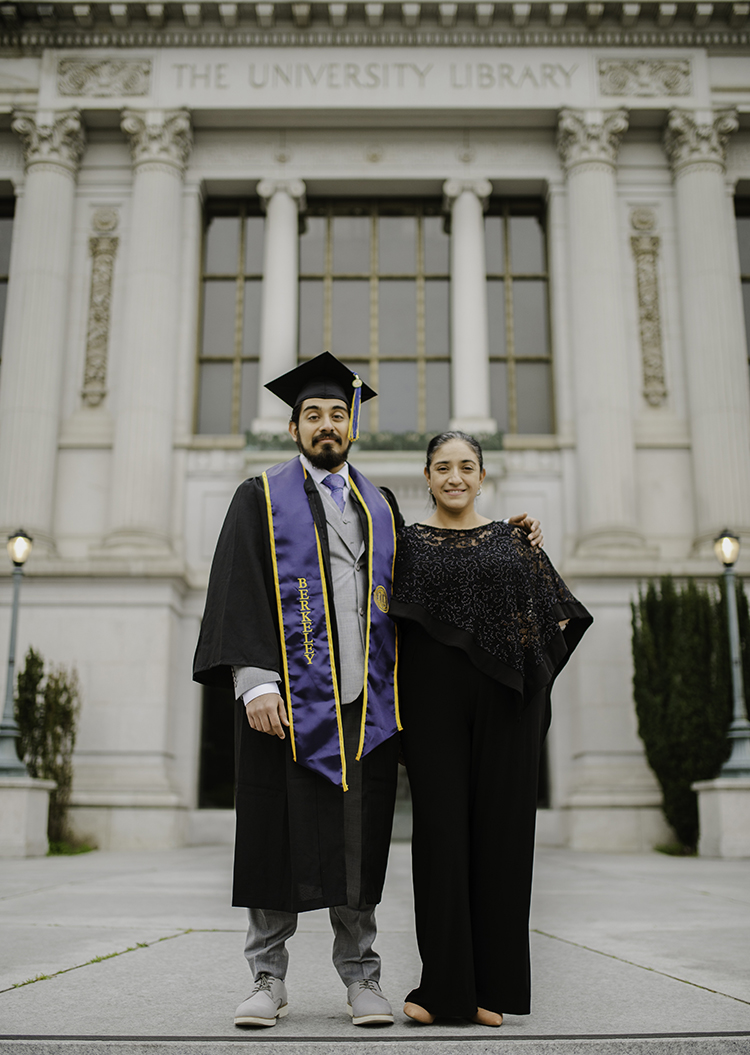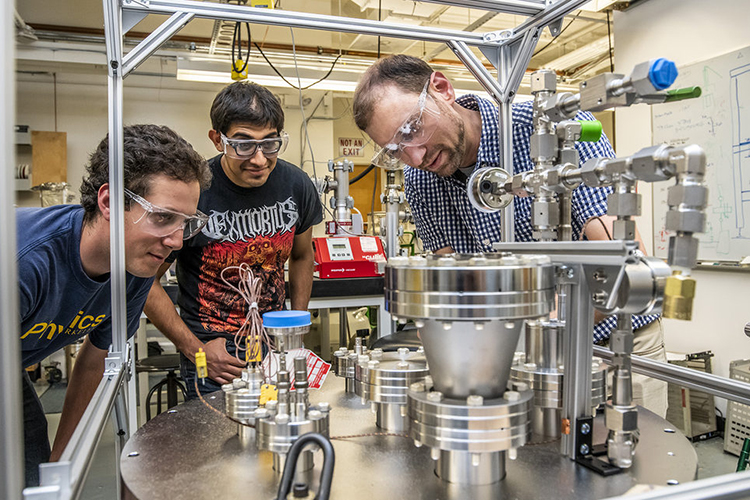I’m a Berkeleyan: Student Gael Flores on his journey from sheet metal worker to physicist
Formerly undocumented student highlights the art of science
May 13, 2020

Gael Flores has not forgotten the arduous journey he’s taken from an undocumented sheet metal worker to a UC Berkeley graduate headed to study physics at UCLA. (Photo courtesy of Mirthica Suganthan)
This I’m A Berkeleyan feature was written as a first-person narrative from an interview with Gael Flores. Have someone you think we should write about? Contact [email protected].
Growing up in Mexico City, we didn’t have a lot of money, but we still had a good time. With my grandma there, we had a pretty big family, and everyone was really close.
At a young age, I was really into art. I remember in elementary school there was this library bus that would come around, and there was an art book series they had called the Draw 50. You would draw 50 animals or draw 50 cars or 50 flowers. I always got the animal and flower books. I really liked nature.
It was my stepdad’s decision to move to Richmond, California. He found work here with a construction company. In 2002, when I was nine years old, he brought my mom, my sister and me here to be with him. But we were all undocumented.

Flores, 7, in front of his home in Mexico City. (Photo courtesy of Gael Flores)
As a kid, I thought he was my biological father. When I was born, they gave me his last name. But when I was 14, he left us, and I found out he was really my stepdad.
My biological father was someone I’ve never met.
Being undocumented, I was scared sometimes. There would be ICE raids in our neighborhood at the local store, or wherever, and they’d just show up and start getting people. I never encountered ICE personally, but my uncle was deported.
In high school, I didn’t really plan to go to a university. But I took a welding class my junior year, and I loved it.
You just get this blank sheet of very thin, flat metal, and you can visualize what you want to turn the metal into. You’re using the tools, and it’s loud, but it’s peaceful, in a way, because it doesn’t require you to focus.
We were pretty much able to create whatever we wanted.
One day, my teacher showed me a picture of roses, and I started imagining what it would look like on a flat sheet of metal, and I started trying to work backward from the picture.
After a while, I got pretty good at making the sheet metal roses, and I would give them to my teacher. He’d give them to his girlfriends.

At a young age, Flores enjoyed drawing and art, including this sketched portrait of his grandmother Florentina Solis Guerrero. (Photo courtesy of Gael Flores)
When I graduated from high school, I got a job at a local McDonald’s and took automotive courses at Contra Costa College. I would sell the sheet metal roses to help pay for my courses.
Being undocumented, I didn’t want to expose myself too much.
While at work, there was a guy who would come in to McDonald’s to make little custom cupholders and things like that out of sheet metal. He saw my roses and introduced me to his boss, who hired me to work at a sheet metal factory near Marina Bay in Richmond.
So, I started working there running their press brake. It’s a metal-bending machine that bends the metal to whatever shapes you want to make. It was pretty easy work. I would have other positions at the factory running the forklifts and laser cutters, but none of it was very mentally difficult.
They let us listen to music while we worked, but I started listening to audiobooks, like Harry Potter and stuff like that. After a while, I wanted to challenge myself by listening to books by the smartest people I could think of.
The smartest person I could think of was Stephen Hawking. So, I got a book by him: A Brief History of Time.
It was crazy, because I listened to these ideas about black holes and subatomic particles and accelerators. One of the big questions that he posed in his book is: Will time flow backward one day, as the universe expands?
So, I was like, ‘What the heck?’
That was pretty wild.

Examples of sheet metal roses Flores made on the balcony of the Richmond apartment, where he lived at with his mother. He sold his welding equipment to help pay for Berkeley. (Photo courtesy of Gael Flores)
The preface of the book was written by Carl Sagan, and that’s how I stumbled onto his television series from the 1980s that was turned into an audiobook, Cosmos: A Personal Voyage.
Sagan talked about scientists and their work, and I kept learning more and more about physics. I was just amazed at how people could figure that every atom that we see around us was made inside a star, or through the explosion of a star. I just knew I wanted to study physics after that.
I started to take more science courses at the community college. I wanted to study at a university, but because I was undocumented, I couldn’t get any financial aid, and the price of a university education was too much for me to afford.
But the universe works in weird ways sometimes.

Flores, left, said his mother Juana, right, wasn’t sure he should quit his job as a sheet metal worker to pursue physics at Berkeley, but she is now proud of his accomplishments and his future plans. (Photo courtesy of Mirthica Suganthan)
At the time, my mom worked as a waitress in Berkeley, and after her shift one night, these men robbed her and took her purse. They scared her really badly. She didn’t want to call the police. She was sure she was going to get deported if she did. But her boyfriend lived nearby, and he thankfully called the police.
The police told her that, if she was willing to help with the investigation and report the crime, that she could probably get a green card for our entire family.
In 2015, we were able to get a green card.
I needed to take morning classes at the community college, because they were required for me to transfer to a university. My boss at the sheet metal factory and his son were very accommodating. They let me pretty much choose my own schedule and gave me the keys to the shop, so that I could go to class in the morning and come in and do a late shift.
They’re a big part of why I’m here at UC Berkeley today. They were the first ones to congratulate me when I got accepted.
Some people study things to make money. I’m not really interested in making money or any kind of thing like that. I’m really passionate about physics and the research of particle physics.
There’s this big project called DUNE, the Deep Underground Neutrino Experiment. They’re going to shoot particles 800 miles through the earth, from Chicago to South Dakota. It’s an international experiment planned for 2026.

Gael Flores, center, works with graduate student Sam Kohn, left, and Berkeley physicist Dan Dwyer, on ArgonCube technology at Lawrence Berkeley National Laboratory. (Photo courtesy of Marilyn Chung, Lawrence Berkeley National Laboratory)
They want to know why there is more matter than anti-matter in the universe. Those big questions are what really interest me. Since I started attending Berkeley in fall 2018, I’ve been a part of the DUNE neutrino experiment group at Lawrence Berkeley National Lab.
The sheet metal work I’ve done in the past was useful in the project, because I could use the milling machines to build stuff for the experiment, like particle detectors.

Gael Flores, left, stands with his fellow research scholars. “Our mantra ‘believe’ means that we believe our students have the talent to achieve their dreams. Gael is a wonderful part of our nerdy family,” said Cal NERDS Director Diana Lizarraga. (Photo courtesy of Diana Lizarraga)
Last summer, Berkeley’s Cal NERDS program funded my research that analyzed the data from the detector. My whole time at Berkeley, Cal NERDS was very helpful and very supportive. As a graduating senior, I would have had no idea how to apply to grad school if it wasn’t for people at Cal NERDS.
This fall, I’ll be going to UCLA in their physics Ph.D. program. My mom and siblings are all very proud of me.
I think being artistic has helped me get this far. Art is an important part of science. It’s not just a mechanical thing. Sometimes you need to be really creative to work out a method to tackle the great scientific questions.
If I could help answer one of those big questions in my lifetime, I think that would be really amazing.
All of the things that I experienced, and all the skills I learned, led me to where I am now. It’s like the elements, and how they were all made in stars. There’s a sense of awe when you realize that.
I think that is what I am feeling now. And I’m grateful